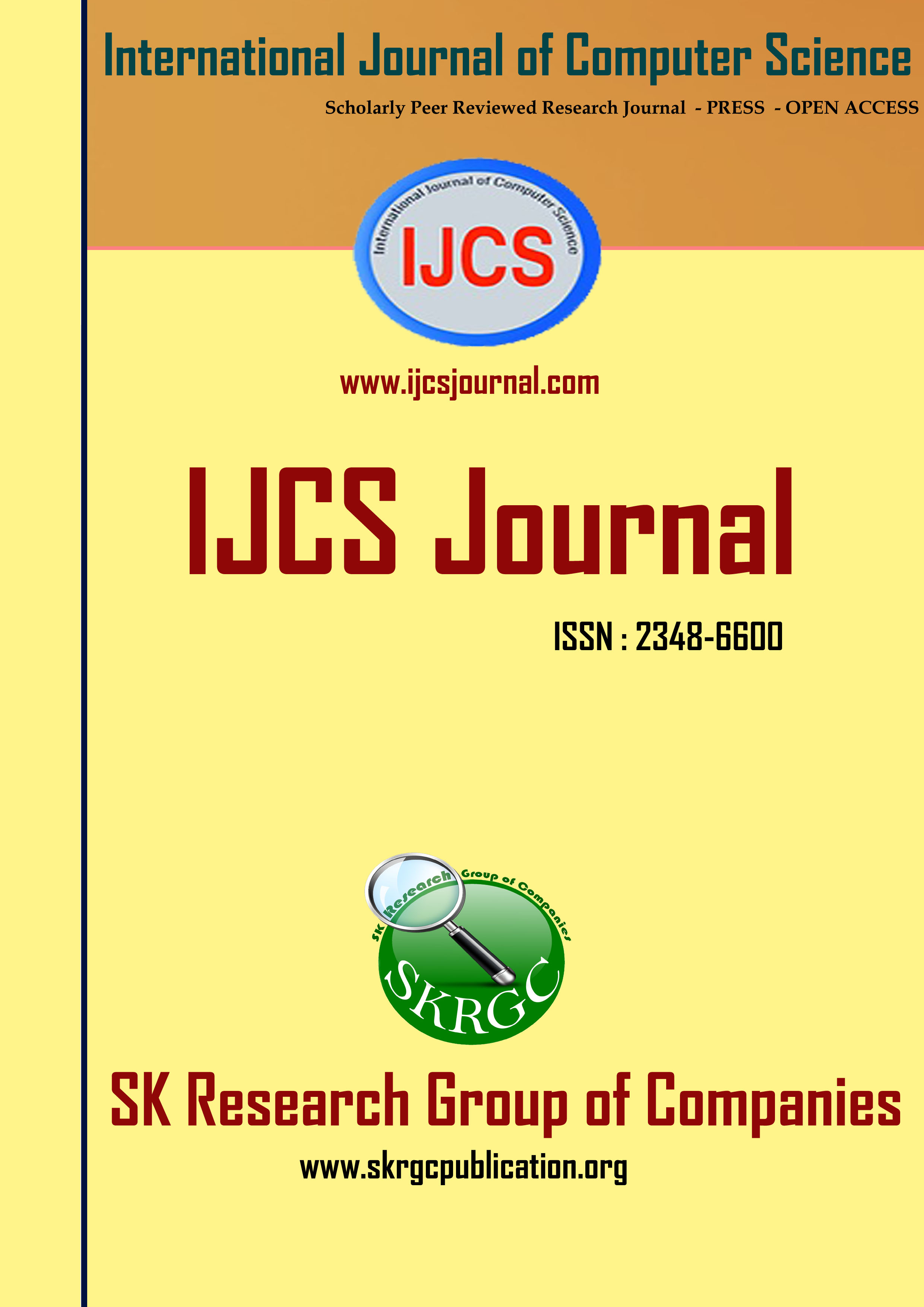EVALUATION OF SLEEP SCHEDULING AND TOPOLOGY CONTROL (CDS)
International Journal of Computer Science (IJCS) Published by SK Research Group of Companies (SKRGC).
Download this PDF format
Abstract
Wireless sensor networks (WSN) have recently used in many applications like surveillance, military applications, etc. In such applications, the sensor nodes are expected to be work long period of time without recharging their batteries. To extend the network lifetime, some sleep scheduling techniques always used, which may cause communication delay in large scale WSNs. In this paper, Although the existing system avoids delay there are still few challenges. So the proposed topology of a wireless network should be efficiently designed to achieve high network performance. Thus remove useless topology information such as collision, redundancy and transmission delay from a network to dramatically improve a network’s broadband utilization, delivery ratio, network lifetime and packet retransmission. This is called as topology control management. Thus Connected Dominating Set (CDS) is regarded as an effective approach to hierarchical topology organization.
References
[1] T. Zheng, S. Radhakrishnan, and V. Sarangan, ?PMAC: An Adaptive Energy-Efficient MAC Protocol for Wireless Sensor Networks,? Proc. 19th IEEE Int’l Parallel and Distributed Processing Symp., pp. 224-231, Apr. 2005.
[2] S.C. Ergen and P. Varaiya, ?TDMA Scheduling Algorithms for Wireless Sensor Networks,? Wireless Networks, vol. 16, no. 4, pp. 985-997, 2010.
[3] G. Lu, B. Krishnamachari, and C. Raghavendra, ?An Adaptive Energy-Efficient and LowLatency MAC for Data Gathering in Wireless Sensor Networks,? Proc. 18th IEEE Int’l Parallel and Distributed Processing Symp., pp. 224-230, Apr. 2004.
[4] A. Keshavarzian, H. Lee, and L. Venkatraman, ?Wakeup Scheduling in Wireless Sensor Networks,? Proc. Seventh ACM Int’l Conf. Mobile Ad Hoc Networking and Computing, pp. 322-333, May 2006.
[5] G. Lu, N. Sadagopan, B. Krishnamachari, and A. Goel, ?Delay Efficient Sleep Scheduling in Wireless Sensor Networks,? Proc. 24th IEEE Int’l Conf. Computer Comm., pp. 2470-2481, Mar. 2005.
[6] N.A. Vasanthi and S.A., ?Energy Efficient Sleep Schedule for Achieving Minimum Latency in Query Based Sensor Networks,? Proc. IEEE Int’l Conf. Sensor Networks, Ubiquitous, and Trustworthy Computing, pp. 214-219, June 2006.
[7] N.A. Vasanthi and S. Annadurai, ?AWS: Asynchronous Wakeup Schedule to Minimize Latency in Wireless Sensor Networks,? Proc. IEEE Int’l Conf. Sensor Networks, Ubiquitous, and Trustworthy Computing, pp. 144-151, June 2006.
[8] Y. Sun, O. Gurewitz, S. Du, L. Tang, and D.B. Johnson, ?ADB: An Efficient Multihop Broadcast Protocol Based on Asynchronous Duty-Cycling in Wireless Sensor Networks,? Proc. Seventh ACM Conf. Embedded Networked Sensor Systems, pp. 43-56, Nov. 2009.
Keywords
sleep scheduling, wake-up pattern

